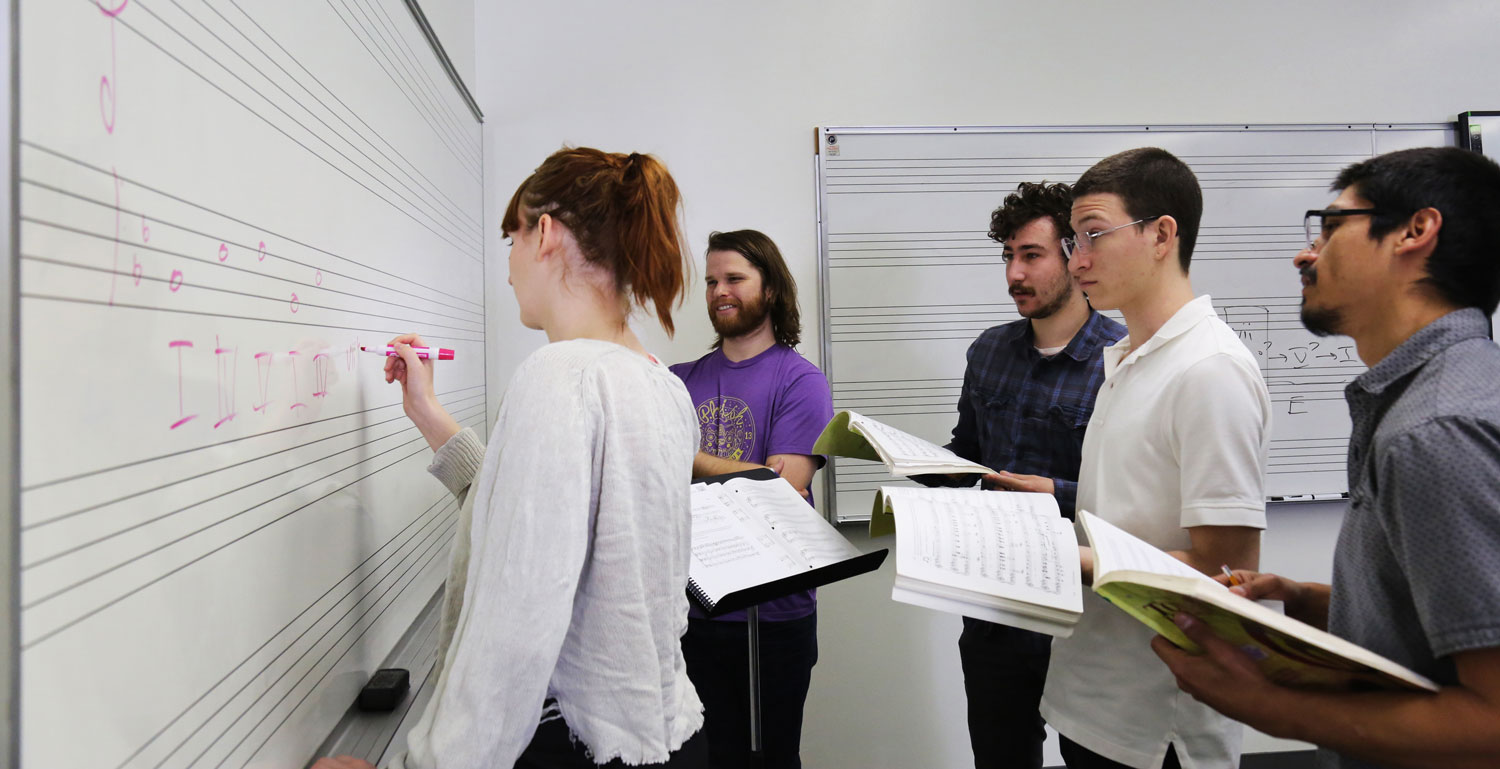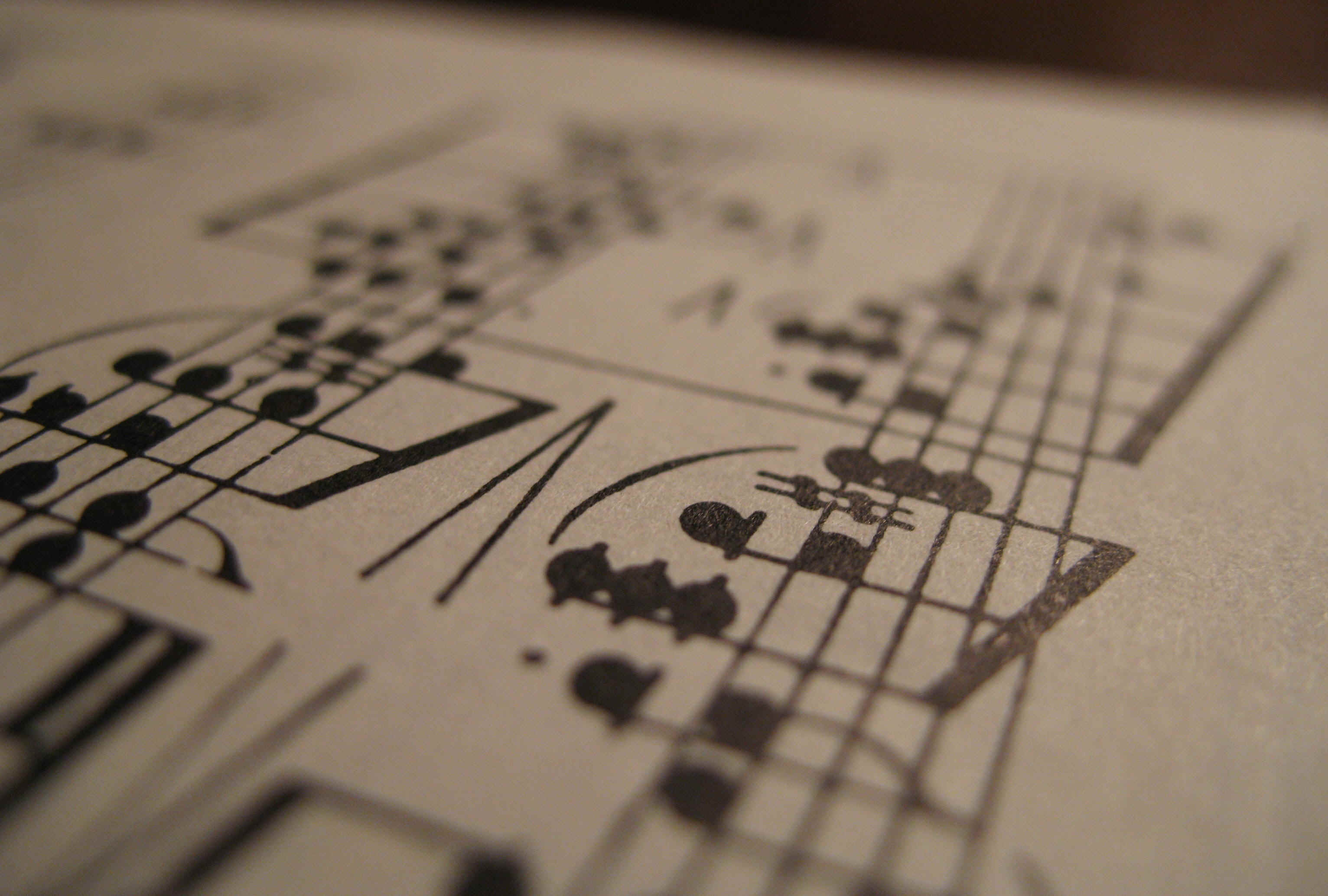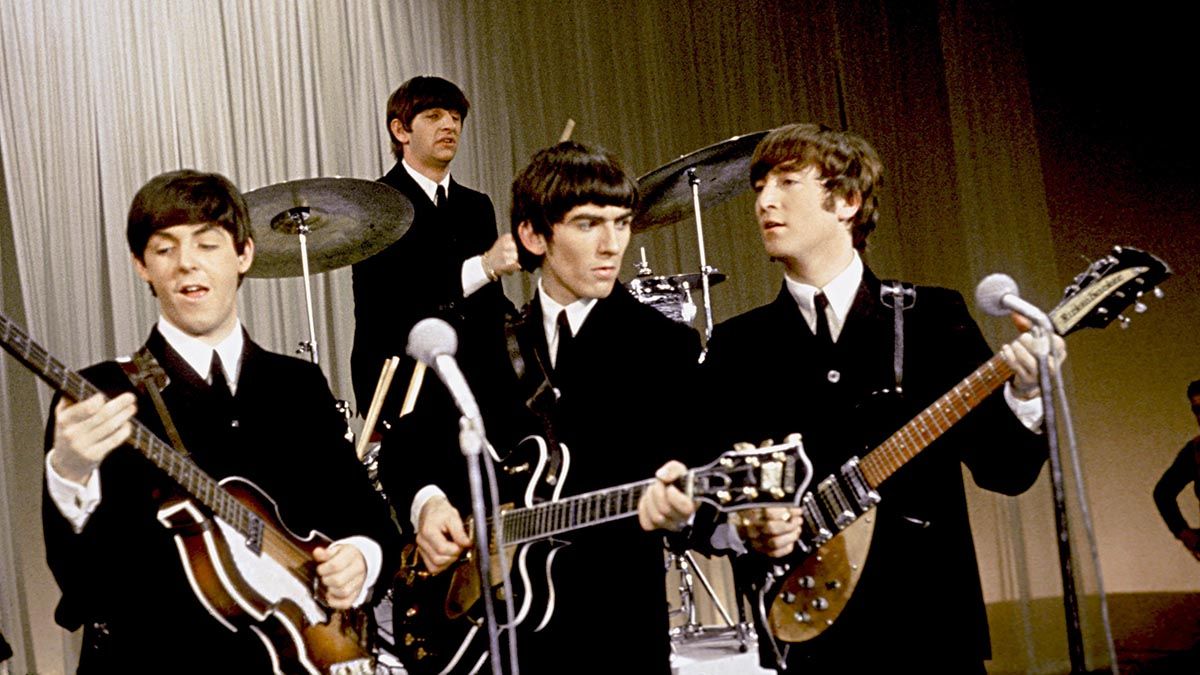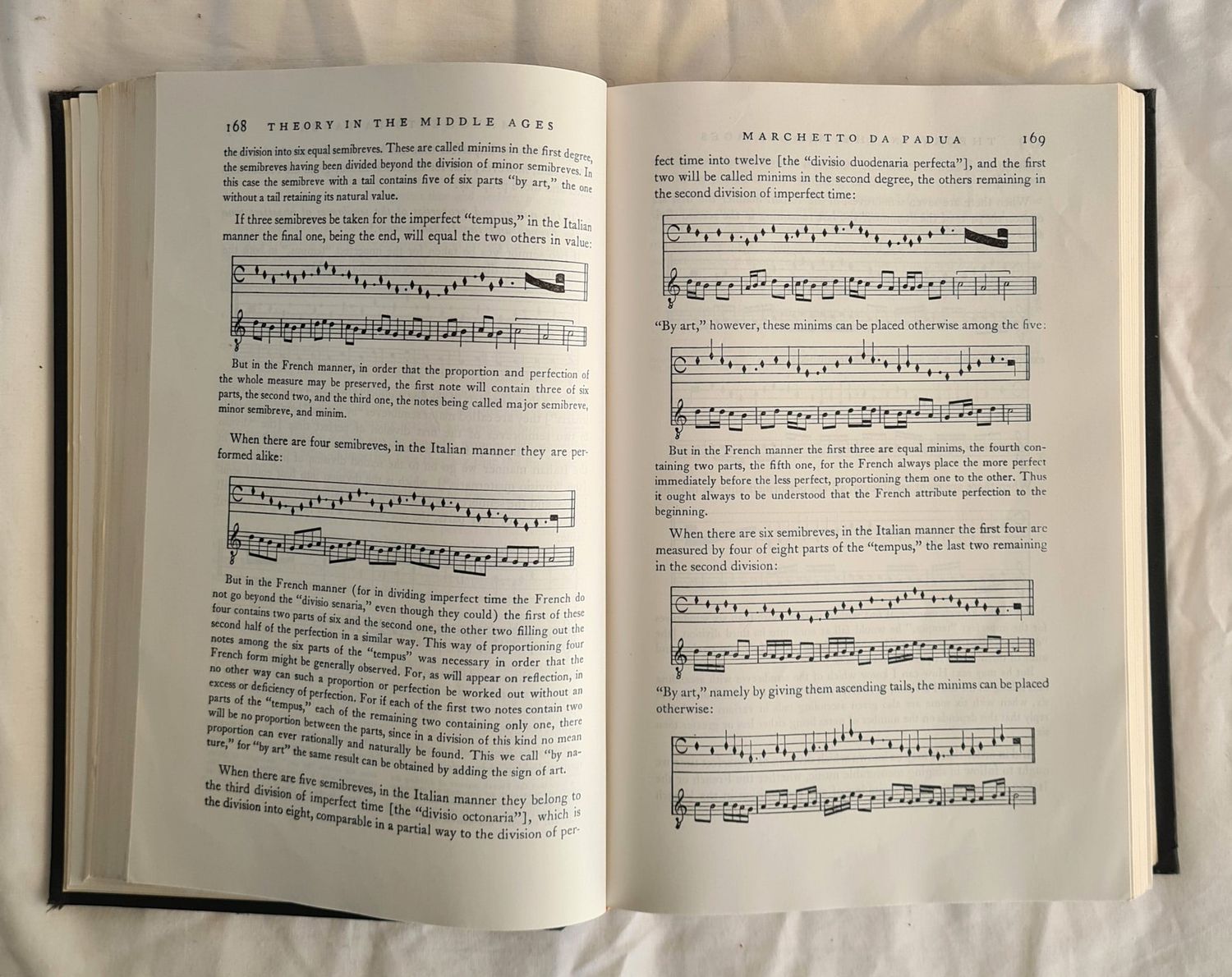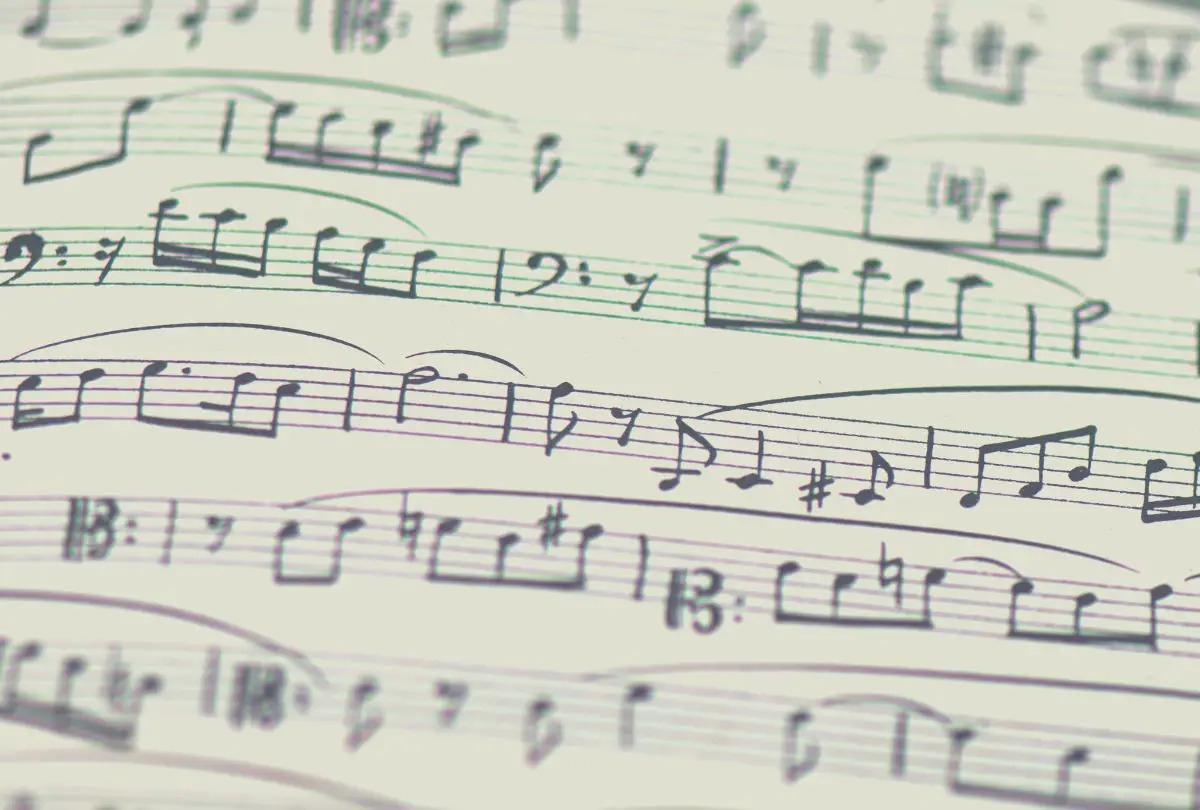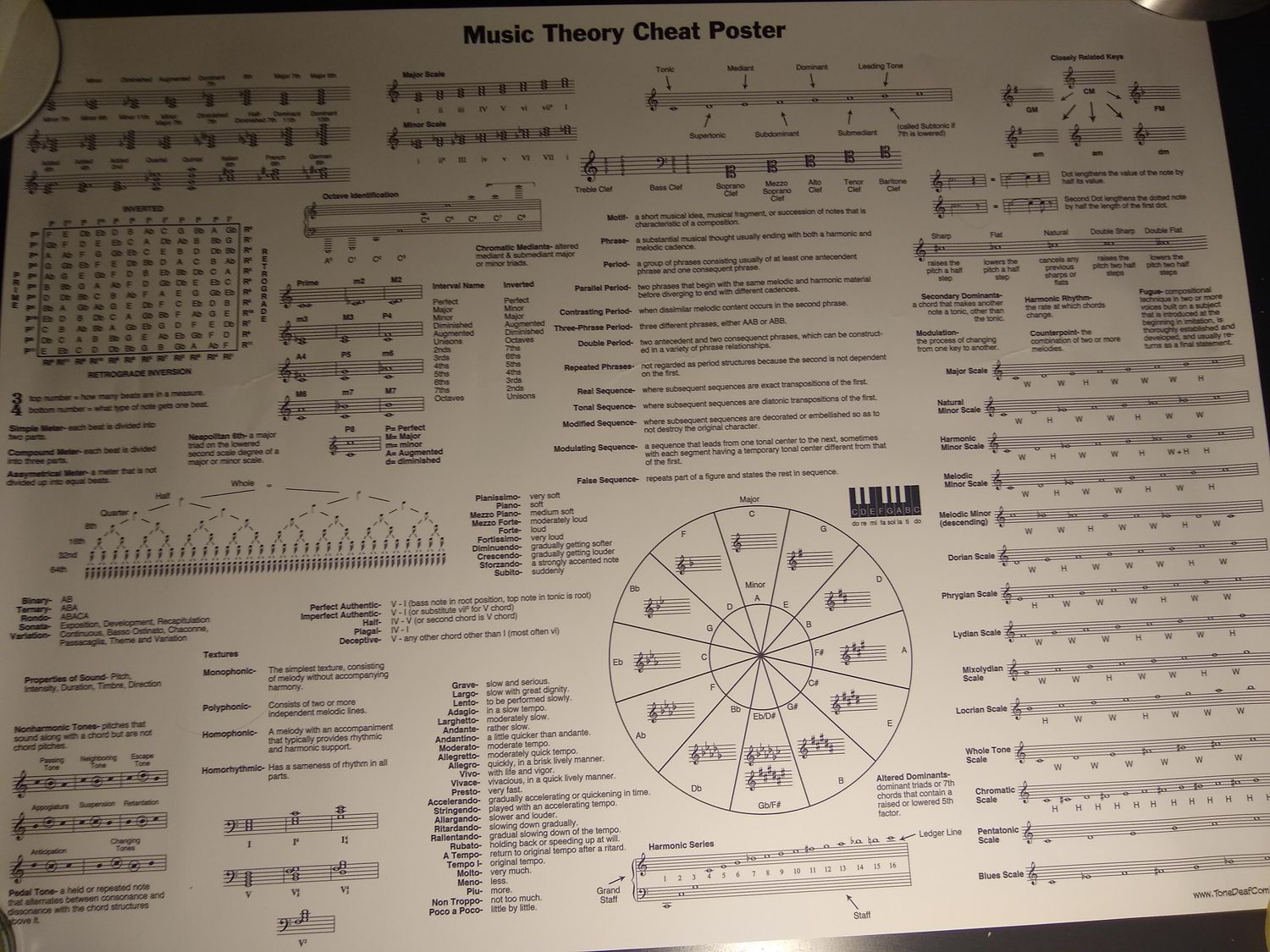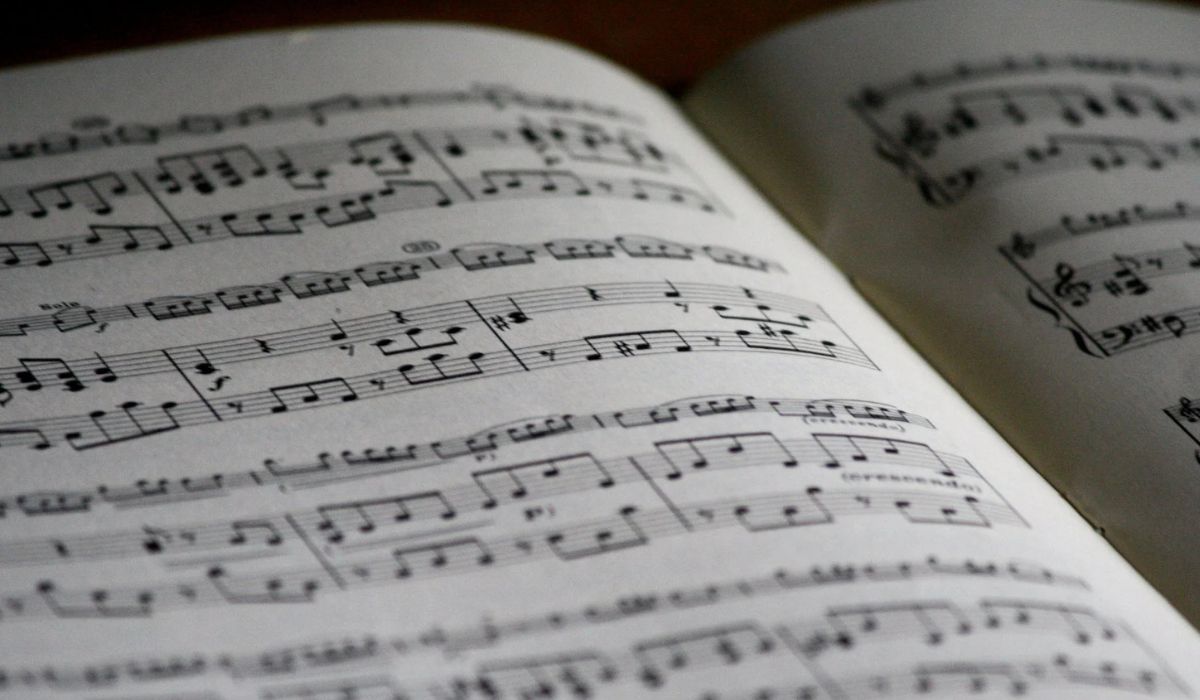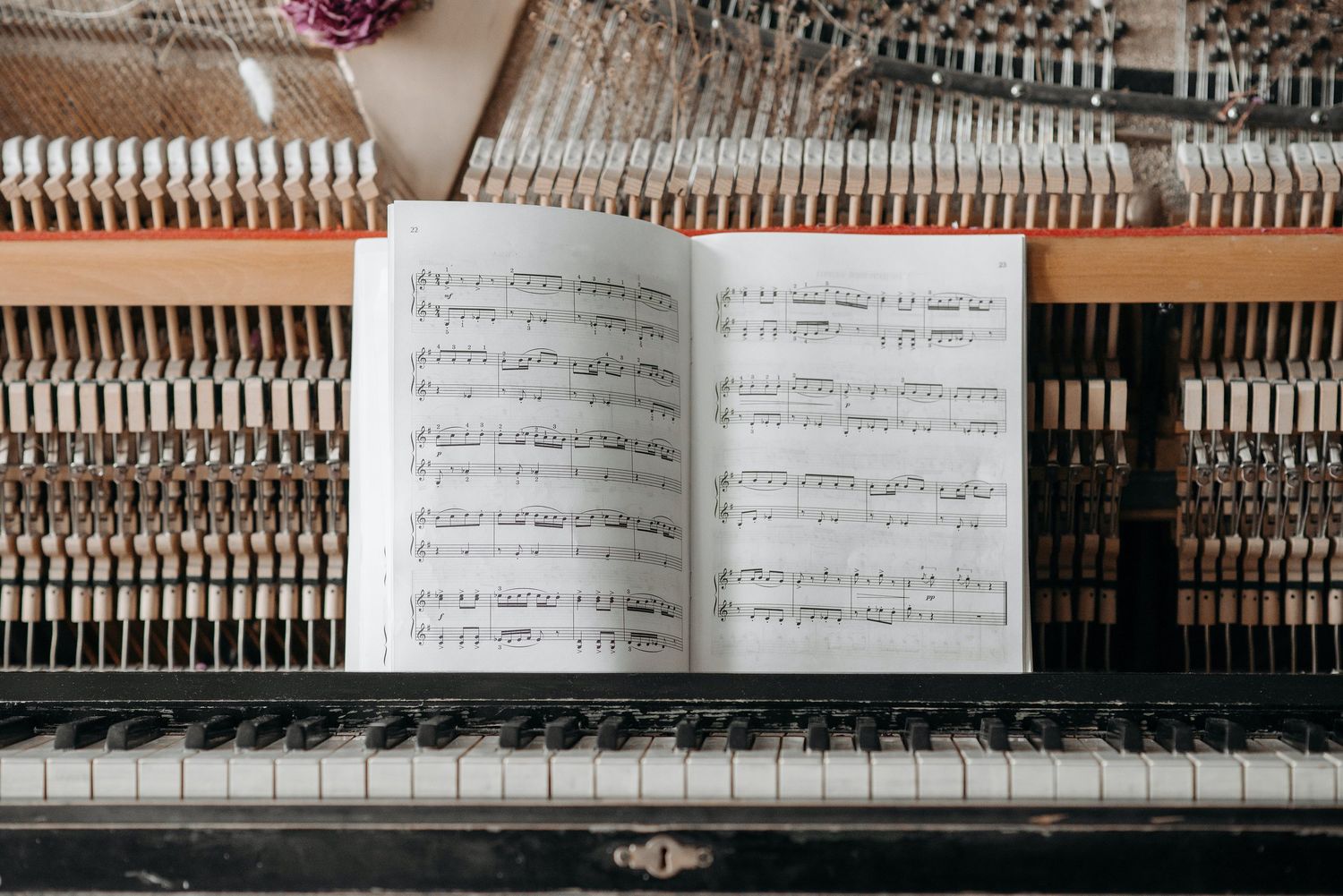Home>Production & Technology>Music Theory>What Aspects Of Music Theory And Music Learning Were First Developed In China?
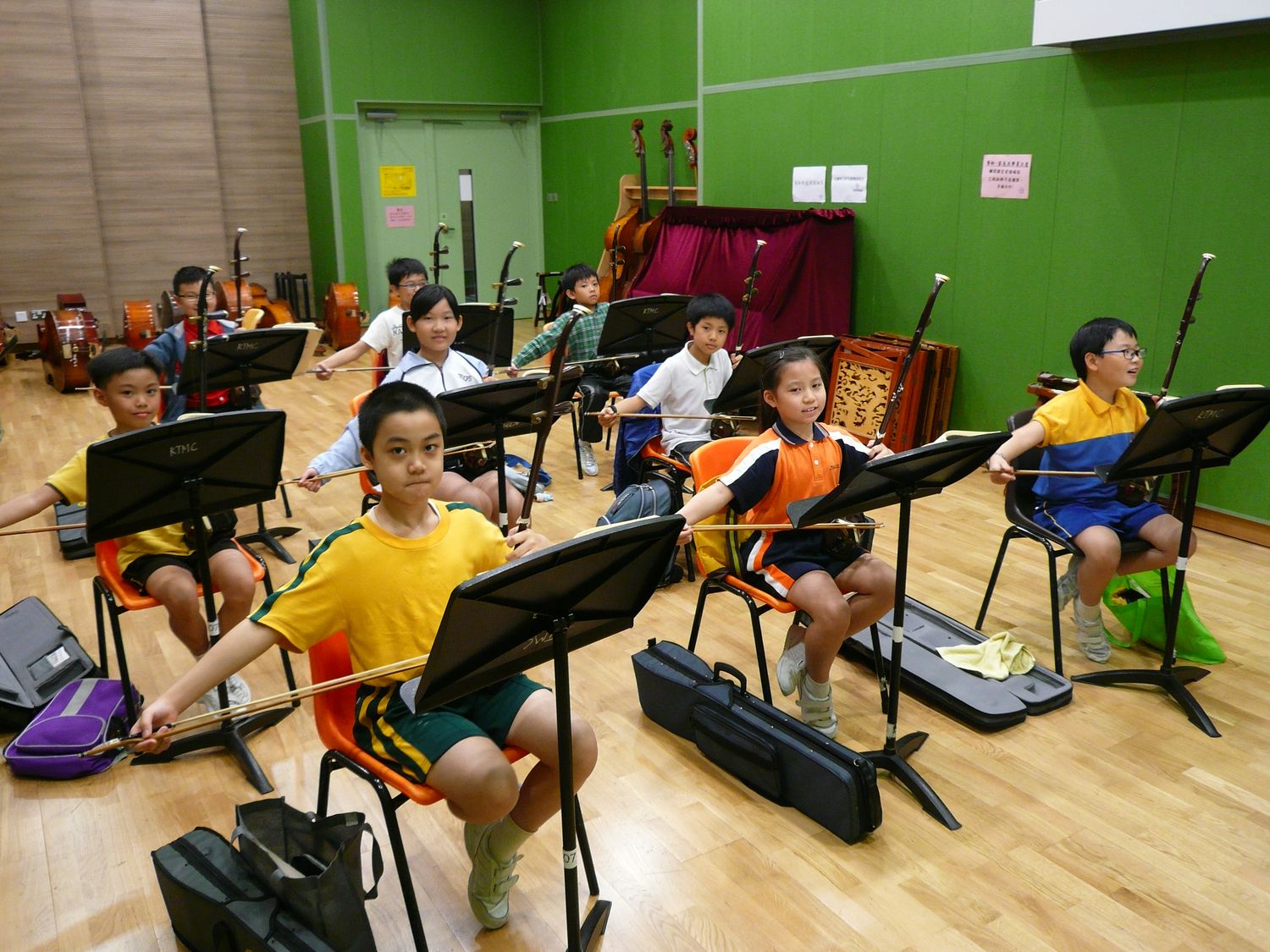

Music Theory
What Aspects Of Music Theory And Music Learning Were First Developed In China?
Published: February 1, 2024
Learn about the origins of music theory and music learning in China, exploring the rich cultural heritage and unique aspects that have shaped this discipline.
(Many of the links in this article redirect to a specific reviewed product. Your purchase of these products through affiliate links helps to generate commission for AudioLover.com, at no extra cost. Learn more)
Table of Contents
Introduction
Music theory is an essential aspect of understanding and creating music. It is the study of how music works, including the elements of melody, harmony, rhythm, and form. While many people are familiar with Western music theory, it is important to acknowledge the rich history and contributions of other cultures, such as ancient China, in the development of music theory as we know it today.
Ancient Chinese music theory dates back thousands of years, with documented evidence of music being an integral part of Chinese culture as early as the Zhou Dynasty (1046-256 BCE). In China, music was not only seen as a form of entertainment but also as a means to promote harmony, balance, and spiritual well-being.
Chinese music theory was heavily influenced by philosophical concepts, particularly those found in Confucianism and Taoism. The emphasis was placed on the relationship between music and nature, with the belief that music had the power to connect humans with the cosmos.
As we delve into the rich history of Chinese music theory, we will explore the five tones of Chinese music, the unique musical instruments in ancient China, the development of the Chinese notation system, and the influence of Chinese music theory on Western music. By studying the origins and evolution of music theory in China, we can gain a deeper appreciation for the universal language of music and the cultural exchange that has shaped it throughout history.
Ancient Chinese Music Theory
Ancient Chinese music theory is rooted in the belief that music is a powerful tool for harmonizing one’s mind, body, and spirit. It was deeply influenced by the philosophical and spiritual traditions of Confucianism, Taoism, and Buddhism.
One of the key concepts in ancient Chinese music theory is the understanding of music as a reflection of the natural world. Chinese scholars believed that music should mimic the rhythms and sounds found in nature, such as the flow of water, the rustling of leaves, and the calls of birds. This connection between music and the natural world is known as “yin” and “yang,” representing the contrasting forces of darkness and light.
The ancient Chinese also recognized the significance of the five elements – wood, fire, earth, metal, and water – in music theory. Each element was associated with a specific pitch, color, direction, and emotion. This understanding of the five elements greatly influenced the composition and performance of music in ancient China.
The concept of “Li” was also central to Chinese music theory. Li refers to the underlying principles or patterns that govern the structure and organization of music. It encompasses elements such as rhythm, tone, and melody, and seeks to create a sense of balance and harmony.
Moreover, ancient Chinese music theory emphasized the importance of the human voice as a primary instrument. Singing was considered the most direct way to express emotions and communicate with the divine. Consequently, vocal music played a significant role in both ceremonial and everyday contexts.
Throughout history, Chinese scholars documented their understanding of music theory in various treatises and textbooks. One of the most influential works is the “Yue Ji” or “Record of Music,” compiled during the Han Dynasty (206 BCE – 220 CE). This treatise explored topics such as scales, modes, and the aesthetic principles of music.
The ancient Chinese music theory laid the foundation for the development of traditional Chinese music and continues to shape contemporary Chinese music practices. Its principles and concepts have not only influenced the music of East Asia but have also impacted the global understanding and appreciation of music as a whole.
Five Tones of Chinese Music
In ancient Chinese music, the five tones, also known as the pentatonic scale, played a fundamental role. These five tones, collectively known as the “wu yin” in Chinese, are the foundation of traditional Chinese music and have shaped the unique sound of Chinese melodies for centuries.
The five tones are based on the relative pitch of different notes and are represented by the syllables “Gong,” “Shang,” “Jiao,” “Zhi,” and “Yu” in Chinese. Each tone is associated with a particular pitch and has its distinct musical characteristics.
1. Gong: The Gong tone is the fundamental pitch and serves as the tonic in Chinese music. It is a deep and resonant tone that represents stability, grounding, and balance. The Gong tone is often associated with the earth element and is traditionally played by instruments such as the guzheng (a plucked zither) and the dizi (a bamboo flute).
2. Shang: The Shang tone is slightly higher in pitch than the Gong tone and is considered the “leading tone.” It has a bright and uplifting quality and embodies the element of wood. The Shang tone is often associated with celebrations and happiness and is commonly heard in traditional Chinese folk music.
3. Jiao: The Jiao tone is higher in pitch than the Shang tone and carries a sense of elegance and grace. It represents the element of fire and is often associated with emotions and expressions of love. Instruments such as the erhu (a two-stringed fiddle) and the pipa (a pear-shaped lute) often showcase the melodic qualities of the Jiao tone.
4. Zhi: The Zhi tone is higher than the Jiao tone and has a clear and piercing quality. It represents the metal element and symbolizes strength and brilliance. The Zhi tone is often used in ceremonial music and can be heard in traditional Chinese opera and court music.
5. Yu: The Yu tone is the highest in pitch among the five tones and carries a sense of fluidity and movement. It represents the water element and is associated with emotions such as sadness and introspection. The Yu tone is prevalent in Chinese traditional music that conveys a sense of tranquility and peacefulness.
The unique arrangement of these five tones in Chinese music creates a distinct tonal system that distinguishes it from Western diatonic scales. The use of the pentatonic scale allows for greater flexibility and freedom in melodic improvisation and provides a basis for the ornamentation and expressive nuances observed in traditional Chinese music performances.
Even in contemporary Chinese music, the influence of the five tones can be heard, as composers and musicians continue to be inspired by and explore the rich possibilities offered by this foundational musical system.
Musical Instruments in Ancient China
The ancient Chinese had a rich and diverse array of musical instruments, each with its distinct sound and purpose. These instruments played a vital role in traditional Chinese music and were often associated with specific rituals, ceremonies, and cultural events.
One of the most iconic musical instruments in ancient China is the guqin, a seven-stringed zither. Revered as the “instrument of the sages,” the guqin held a significant place in Chinese culture and was associated with intellectual pursuits and moral discipline. Its ethereal and delicate tones were said to evoke profound emotions and induce inner reflection.
Another well-known instrument is the pipa, a pear-shaped lute with four strings. The pipa was widely played in various musical genres, including court music, folk music, and storytelling. It is a highly expressive instrument, capable of imitating the sounds of nature and conveying a wide range of emotions.
The erhu, a two-stringed fiddle, is also prominent in ancient Chinese music. Its haunting and melancholic sound is evocative of human emotions and is often featured in solo performances, chamber music, and Chinese opera.
Ancient China also had a variety of percussion instruments, such as the bianzhong (bronze bells), paigu (drums), and bo (cymbals). These instruments were used to provide rhythmic accompaniment and add depth and texture to the music.
In addition to these string and percussion instruments, ancient China had unique wind instruments like the dizi (bamboo flute) and sheng (mouth organ). The dizi is notable for its range of tones and expressive techniques, making it a versatile instrument in solo and ensemble settings. The sheng, with its reed pipes and gourd-shaped resonator, produces a rich and harmonious sound and is often associated with ceremonial music and religious rituals.
It is important to note that ancient Chinese musical instruments were not limited to specific genres or functions. They were versatile and capable of adapting to the needs of various musical contexts, from courtly performances to rural festivities.
The craftsmanship and design of these ancient Chinese instruments were also highly regarded. Many instruments were adorned with intricate carvings, elaborate decorations, and auspicious symbols, reflecting the artistic aesthetics and cultural symbolism of the time.
While modern technologies have introduced new instruments and musical styles to China, the legacy of these ancient musical instruments continues to be celebrated and preserved. They serve as a testament to the rich musical heritage of ancient China and the enduring importance of music in Chinese culture.
Development of Chinese Notation System
The development of a notation system is crucial for preserving and transmitting musical knowledge across generations. In ancient China, the development of a sophisticated notation system played a significant role in documenting and transmitting musical compositions.
One of the earliest notations in Chinese music is the jianpu system, also known as the simplified numerical notation. This system uses numbers to represent the pitch of each note, allowing musicians to quickly and accurately read and play the music. The jianpu notation system is still widely used in contemporary Chinese music education and is particularly popular for teaching beginner musicians.
However, the jianpu system was not the only notation system in ancient China. There were also more complex systems that used characters and symbols to represent specific musical elements, such as melody, rhythm, and ornamentation. These notation systems were often found in written texts, such as the “Yue Ji” or “Record of Music,” which served as a comprehensive guide to music theory and practice.
In addition to musical notation, ancient China also developed a system called gongche notation, which used characters to represent specific pitches. This system was particularly prominent during the Tang Dynasty (618-907 CE) and was widely used for transcribing music in court and literary settings.
The gongche notation system was highly detailed and precise, providing information about pitch, rhythm, and even ornamentation. It used a series of characters called “gongche symbols,” which indicated different pitches and durations. The gongche notation system enabled musicians to accurately reproduce complex melodies and allowed for a standardized approach to music performance.
As time went on, the notation systems in ancient China continued to evolve. During the Ming (1368-1644 CE) and Qing (1644-1912 CE) Dynasties, a system known as “gongche pinyin” was introduced. This system combined gongche notation with the use of Roman letters to represent pitches, providing a more accessible and universal means of musical notation.
Today, modern Chinese music notation systems incorporate elements from both traditional Chinese and Western musical notation. These systems aim to strike a balance between preserving the unique characteristics of Chinese music while also facilitating communication and collaboration with musicians from around the world.
The development of the Chinese notation system has greatly contributed to the preservation and dissemination of Chinese musical traditions. It has provided a means to accurately transcribe and study the complex melodies, harmonies, and rhythms that form the backbone of Chinese music, ensuring that these traditions continue to thrive and be appreciated by future generations.
Influence of Chinese Music Theory on Western Music
The rich and ancient music traditions of China have had a surprising impact on Western music, influencing composers, musicians, and scholars for centuries. The exchange of musical ideas and the integration of Chinese music theory into Western musical practices have resulted in a fusion of cultural traditions and expanded the boundaries of Western art music.
One area of influence is the incorporation of Chinese scales and melodies into Western compositions. Western composers have been fascinated by the unique tonalities and pentatonic scales of Chinese music. This influence can be heard in the works of composers such as Debussy and Ravel, who experimented with non-Western scales and modes to create a more exotic and evocative atmosphere in their music.
Chinese musical instruments have also made their way into Western compositions. The distinct sounds and timbres of instruments like the guzheng, pipa, and erhu have found their place in contemporary Western compositions, adding a touch of the East to Western classical music.
Furthermore, Chinese musical philosophy and aesthetic principles have influenced Western composers’ approach to rhythm, harmony, and form. The concept of balance, harmony, and emphasizing the relationship between sound and nature, as found in Chinese music theory, has influenced Western notions of musical structure and expression.
Chinese music has also played a role in expanding Western musicians’ understanding of the possibilities of instruments and performance techniques. For example, the techniques used in playing the guqin, such as sliding and glissando, have been incorporated into Western guitar playing.
Additionally, the study of Chinese music theory has provided Western music scholars with a broader perspective on the philosophy, history, and cultural aspects of music. It has led to cross-cultural dialogues and collaborations, fostering a deeper appreciation and understanding of both Western and Chinese music traditions.
Today, with increased globalization and cultural exchange, the influence of Chinese music theory on Western music continues to grow. Musicians, composers, and scholars are exploring new ways to blend traditional Chinese elements with Western musical idioms, creating innovative and unique musical expressions.
Ultimately, the influence of Chinese music theory on Western music reflects the universal nature of music as a language of expression. By embracing diverse musical traditions, we open ourselves up to a world of creative possibilities and build bridges between cultures, enriching the global musical landscape.
Conclusion
The development and influence of Chinese music theory throughout history have left an indelible mark on the world of music. From the ancient principles rooted in harmony with nature to the intricate notation systems and unique tonalities, Chinese music theory has played a significant role in shaping musical understanding and practice.
Ancient Chinese music theory, with its emphasis on the five tones, the integration of the natural world, and the exploration of the human voice, provided a foundation for the creation of melodic and harmonic structures. Its influence can be seen in both traditional Chinese music and its impact on Western musical traditions.
The incorporation of Chinese scales, melodies, and instruments into Western compositions has expanded the boundaries of Western art music, adding new colors, tonalities, and expressive possibilities. It has also broadened Western musicians’ perspectives on performance techniques, rhythmic variations, and the overall aesthetics of music.
The development of Chinese notation systems, from the numerical jianpu system to the more detailed gongche notation systems, has facilitated the documentation, transmission, and study of ancient Chinese music. It has also contributed to cross-cultural exchange and collaboration between Eastern and Western musicians and scholars.
Moreover, the influence of Chinese music theory extends beyond the realm of composition and performance. It has influenced Western scholars’ understanding of music as a cultural and spiritual expression, fostering a deeper appreciation for the cultural context and philosophy behind the music.
As we continue to explore the rich history and legacy of Chinese music theory, it is essential to recognize its profound impact on the global musical landscape. By embracing and appreciating the contributions of diverse musical traditions, we enrich our understanding of music as a universal language that transcends the boundaries of culture, time, and place.
In conclusion, Chinese music theory serves as a testament to the beauty, depth, and transformative power of music. It reminds us of the inherent connections between music and humanity and the profound ways in which music has the ability to touch hearts, transcend language barriers, and unite people from all corners of the world.

